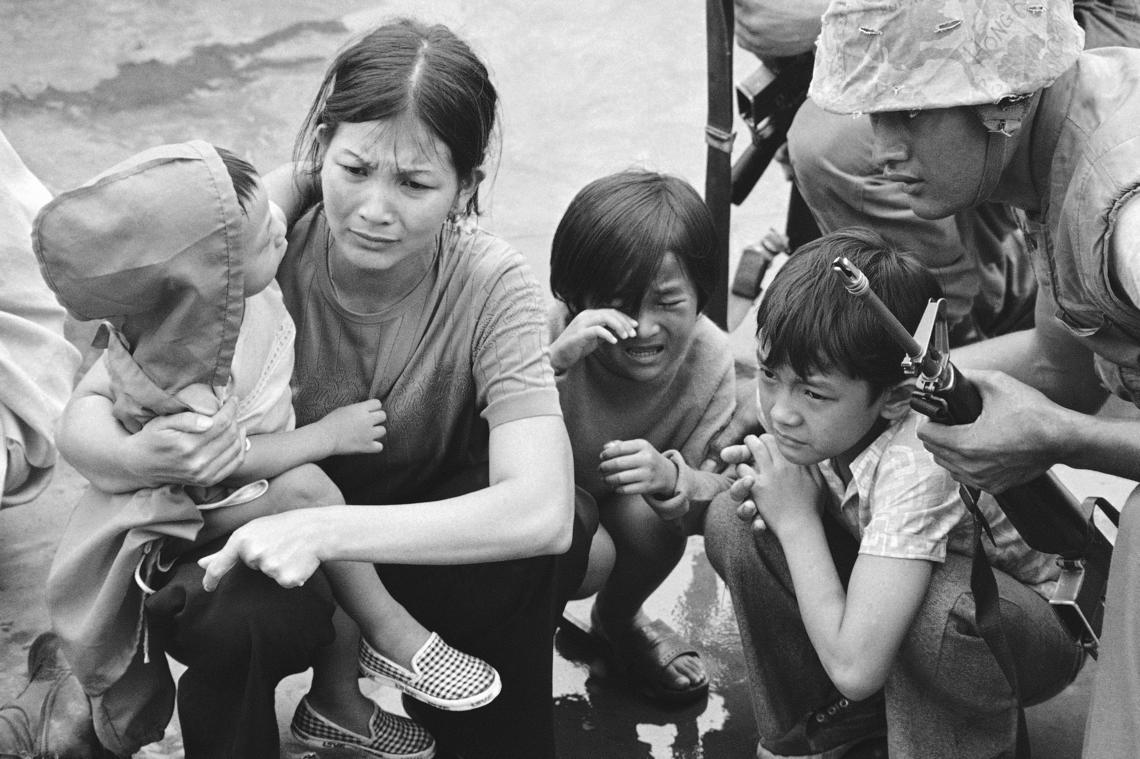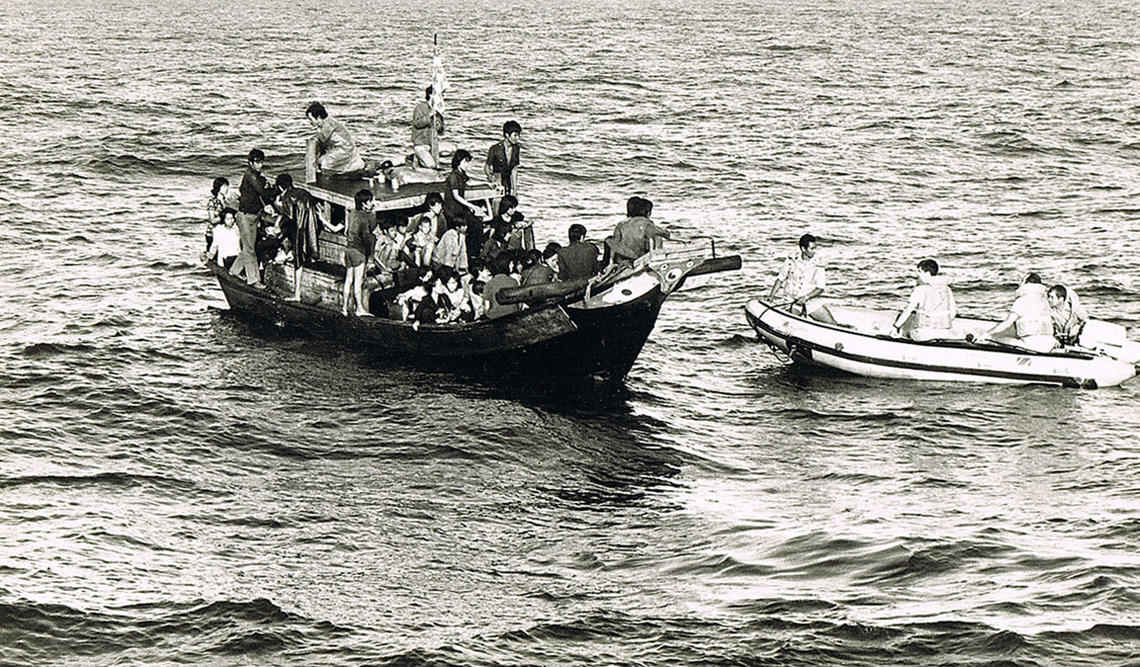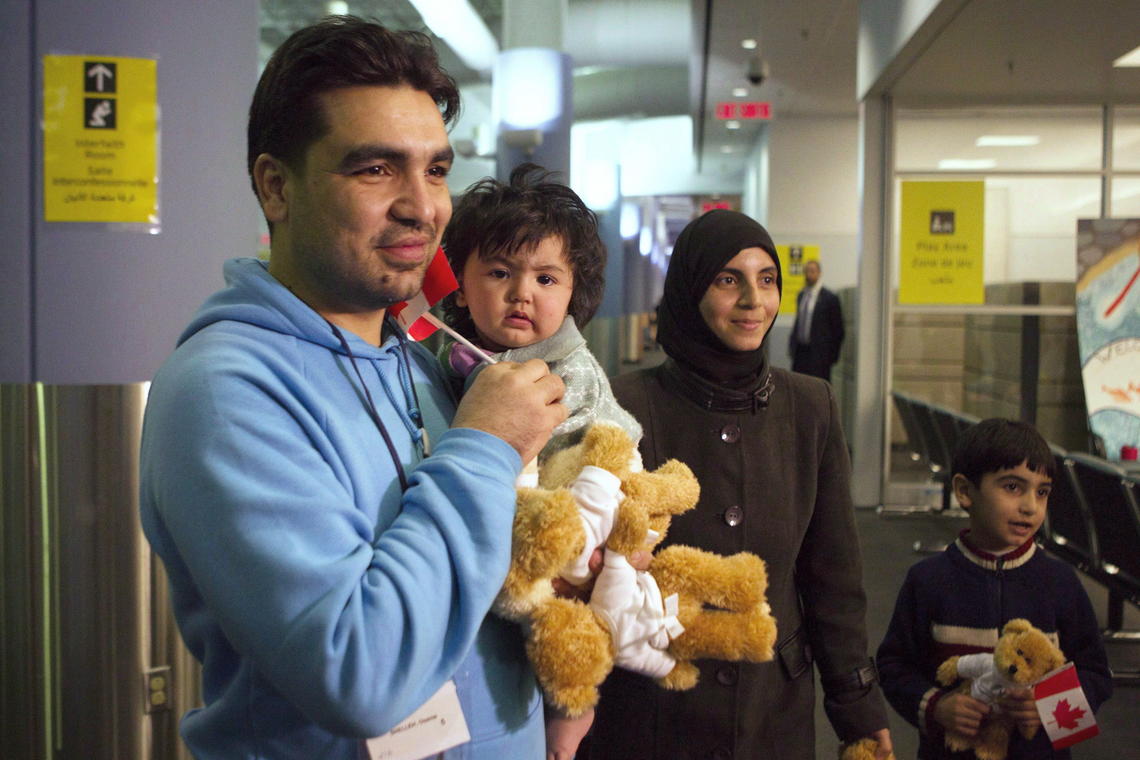
Oct. 18, 2021
Why Joe Biden should emulate Canada and go big on private refugee resettlement
As attention turns from the evacuation of Afghanistan to the arrival of refugees, U.S. President Joe Biden has an opportunity for large-scale engagement of the American public in a deeply personal fashion.
If Canada’s history is any indicator, the capacity of private American citizens to resettle refugees is large and untapped. It may even bridge the divide over immigration in the United States.
Read more: The story behind the world's first private refugee sponsorship program
In the immediate aftermath of the fall of Saigon in 1975, some 130,000 Vietnamese refugees were lifted by sea and air to Guam and military bases in the southern United States. They were quickly resettled in the U.S., Canada and other countries, and were soon followed by an even larger exodus of refugees from Cambodia, Laos and Vietnam.

A weeping South Vietnamese mother and her three children on the deck of an amphibious command ship are rescued from Saigon by U.S. Marine helicopters in Vietnam in April 1975.
AP Photo/J.T. Wolkerstorfer
Another three million refugees would flee these countries as communist regimes were consolidating power. Many fled on ramshackle boats where almost one in three were lost at sea. Others died of abuse and neglect in camps, where they were preyed upon by unfriendly governments.
Despite the situation, the international community was slow to respond — only 8,500 refugees were resettled in the four years between the fall of Saigon and May 1979. In Canada, the government of Pierre Trudeau had committed to resettle 5,000 Indochinese refugees, but only 1,100 had arrived. Then, something remarkable happened.
Canada steps up
On the eve of a United Nations conference in Geneva to discuss the issue, Canada announced its intention to resettle 50,000 refugees by the end of 1980, which was just 18 months away. This would later be revised to 60,000.
Just as astounding was its intention resettle half of these through its new private refugee sponsorship program. Canadians from all walks of life, from rural Manitoba to urban Toronto, could respond to the situation by volunteering their homes, funds and time to receive and resettle Indochinese refugees.
This announcement coincided with swelling Canadian support for refugee resettlement. In February 1979, 89 per cent of Canadians were opposed to inviting more refugees; only seven per cent wanted more. Within months, opposition had tumbled to 38 per cent, while 52 per cent supported increased resettlement.
Groups ranging from churches to bowling clubs signed up to sponsor individuals and families, while kids sold lemonade at $50 a glass ($175 in 2021 dollars) to fund new arrivals. Rural townships called into Ottawa to ask when they would receive their family, and townhalls that had been convened to debate the topic of refugees turned into spontaneous sponsorship drives.

Vietnamese people fleeing their country are seen in a crammed boat off the coast of Vietnam in the late 1970s.
Jesuit Refugee Service Asia Pacific, CC BY
Pairing sponsors with refugees
In Ottawa, the government was busy matching sponsors to refugees. An enterprising policy officer drew inspiration from the Berlin Airlift to avoid overcrowding at arrival points. In the late 1940s during a Soviet blockade of Berlin, western allies flew continuous supplies to airports in Berlin.
Thirty years later, the policy officer obtained one of Ottawa’s first computers that matched refugees to sponsors or immediately placed them in a government-assisted stream. This was aimed at ensuring the smooth transition of Indochinese refugees to their new homes.
Despite some hiccups, more than 80 per cent of eligible refugees were matched with sponsors before the planes landed, and by the end of 1980, all 60,000 had arrived. Adjusted to 2020 U.S. population terms, that’s an equivalent of almost 890,000 people resettled in just 18 months.
Subsequent generations of Canadians have responded with equal enthusiasm to new arrivals from the former Soviet Union, Yugoslavia, Ethiopia and Syria, among others. Private sponsorship continues at a steady, moderate level during years between crises, spurred by cultural groups and family members of refugees, but when sudden large displacements capture public attention a large pool of first-time sponsors step forward.
Roughly five per cent of the Canadian population has sponsored a refugee, while millions more have donated couches, cash or labour.

A family of Syrian refugees arrives at the Welcome Centre at Toronto’s Pearson Airport in 2015.
THE CANADIAN PRESS/Chris Young
Bridging American divides
Perhaps this large constituency of people with experience resettling refugees is one explanation for positive Canadian attitudes towards immigration. If so, private refugee resettlement is a policy that could bridge American divides on migration.
It would also fill the gap left by drastic cuts to the government-funded resettlement sector under the previous Donald Trump administration. Evidence suggests that those sponsored under a private resettlement program do just as well, if not better.
Read more: Donald Trump's ban will have lasting and damaging impacts on the world's refugees
In the midst of the Afghanistan crisis, several U.S. immigration critics (including members of the previous administration) have asked immigration advocates and the public if they really want refugees in their communities.
Contrary to their perceptions, polling suggests the answer is yes — support for resettling Afghan interpreters and other allies sits at around 81 per cent and is unusually consistent across party affiliation.
Sixty-five per cent support expanding resettlement to other Afghans, and 61 per cent are in favour of hosting refugees in their home state.
While the U.S. State Department has announced its intention to start a private sponsorship program, its size or scope isn’t clear yet. Lessons from history teach us that a limited pilot program risks drastically under-utilizing the American capacity for resettlement.
Now is the time for Biden to ask the American people to invite homeless and war-ravaged Afghan refugees into their homes and their communities. Experience has taught us that, like the Statue of Liberty, many will raise their hand in enthusiastic response.






